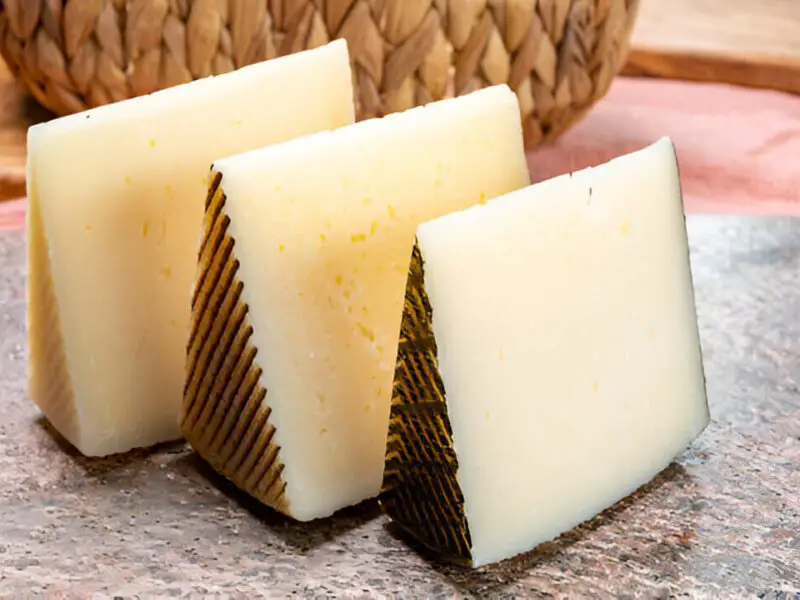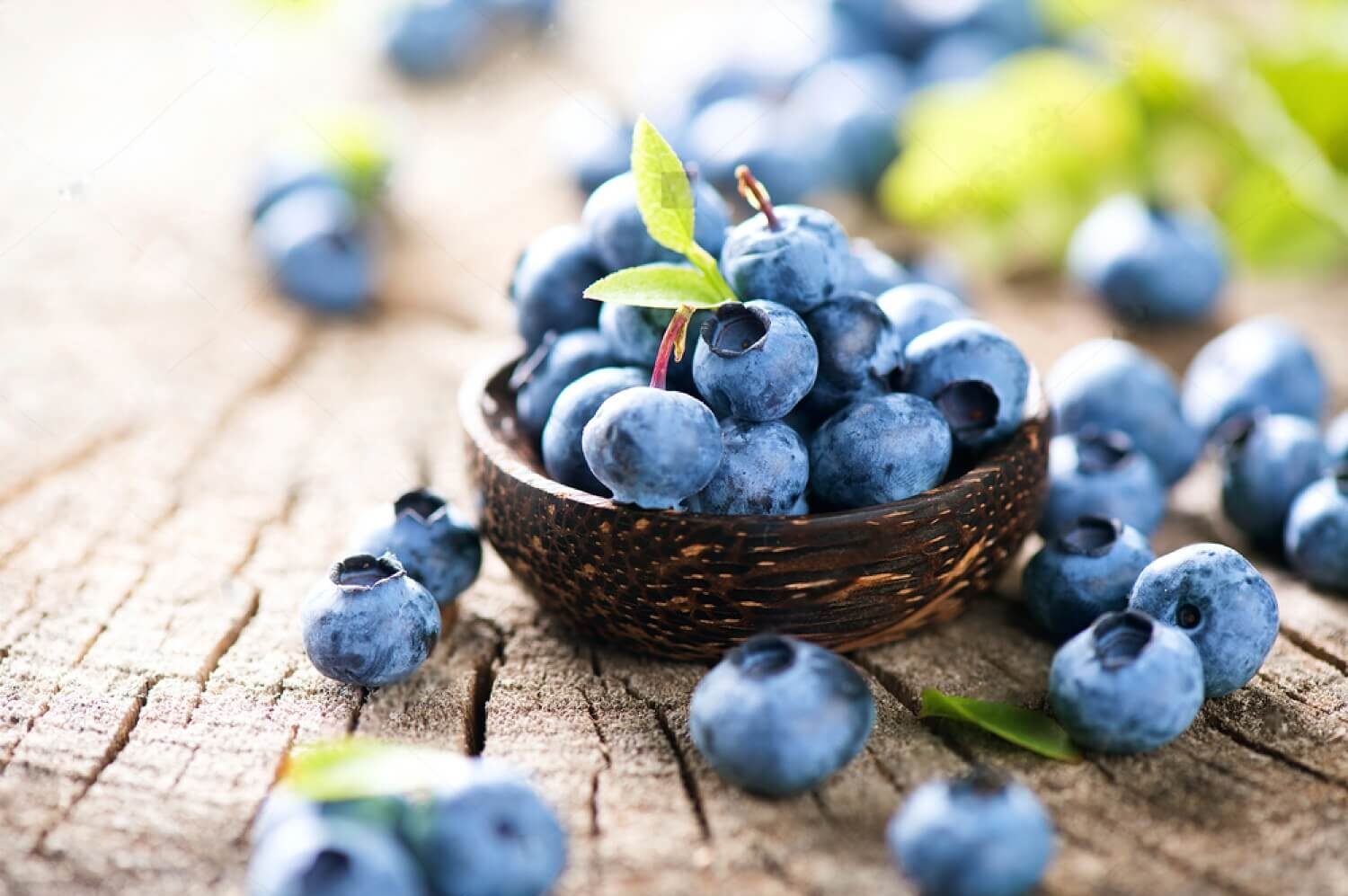Have you ever found yourself staring at those beautiful wedges of Spanish cheese at the grocery store, trying to figure out which one to grab? The zigzag patterns on the rinds look amazingly similar, but there’s something telling you those flavors have got to be worlds apart.
If you’re like most cheese enthusiasts, you’ve probably heard of the famous Manchego cheese. That signature nutty, tangy, sheep’s milk delight is pretty hard to miss. But then there’s this other temptation lurking on the shelves: Iberico cheese. It looks just as appetizing with its firm, oily texture. But is it merely an imitation game, or does Iberico bring its own unique flair to the party?
Deciding between these two beloved Spanish cheese varieties can feel like a cheese lover’s Sophie’s Choice. That’s why in this Iberico vs. Manchego Cheese article, we’re going to break down the key differences, from milk sources to production secrets to those all-important flavor profiles. By the end, you’ll be a certified Manchego and Iberico cheese expert, ready to make your choice like a true Spanish cheese connoisseur.
What is Iberico Cheese?
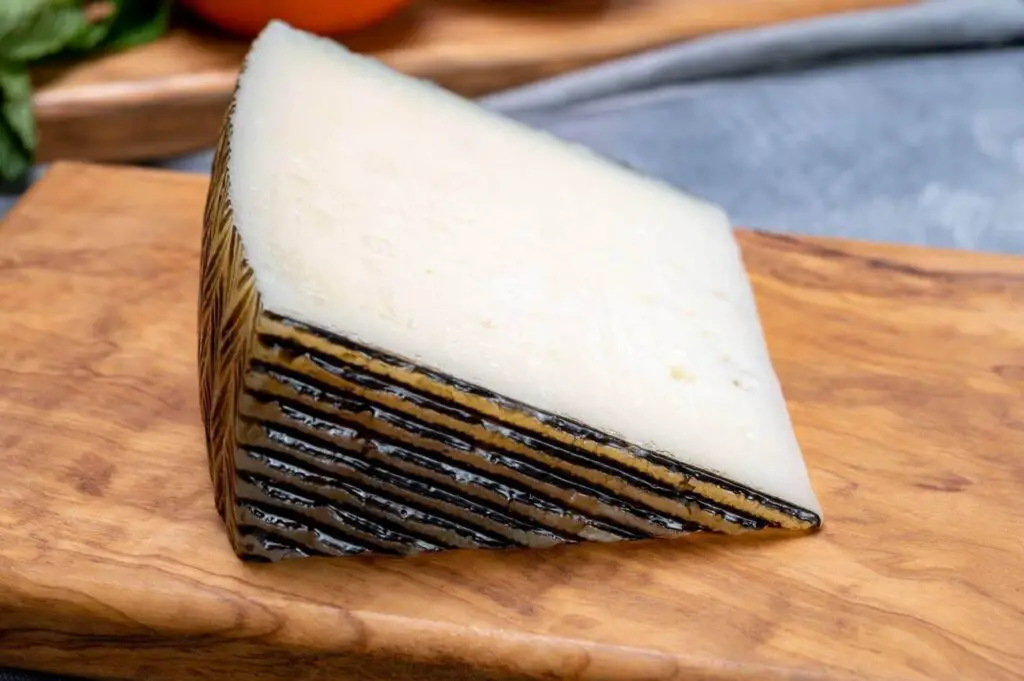
Also called queso iberico, this traditional Spanish cheese has origins that can be traced back over a thousand years to the Iberian Peninsula. But don’t let its age-old roots fool you – Iberico is a complex and sophisticated cheese that’s earned a devoted modern-day following.
Unlike its sheep’s milk counterpart, Manchego, Iberico gets its rich, nuanced flavor from a blend of milk sourced from cows, sheep, and goats. Talk about a diverse dairy trio! The milk can be either pasteurized or delightfully unpasteurized for that extra rustic flair.
The production process for Iberico is an art form in itself. After the mixed milks are gently curdled, the curds are carefully pressed into cylindrical molds. This allows the cheese to develop Its signature firm, slightly oily texture,whicht cheese lovers can’t get enough of.
Depending on the cheese maker’s desired end result, Iberico can then be semi-cured for a few months or taken through an extended aging process lasting up to two years or more. The longer it ages, the more its complex, layered flavors are allowed to fully develop and intensify.
So what does this magnificent Spanish cheese taste like? Imagine savoring notes of butteriness complemented by hints of fruitiness and nuttiness, all swirling together in perfect harmony. Each bite delivers a flavor experience that’s both robust and refined. No wonder Iberico is often regarded as Spain’s answer to premium aged cheeses like Parmigiano Reggiano.
While you can certainly appreciate Iberico on its own as a delicious table cheese, its versatility also shines through in all sorts of recipes. Shave some over a fresh green salad, grate it over pasta dishes, or incorporate it into sauces for an instant flavor upgrade. Once you get a taste of Iberico, you’ll want to start working it into your kitchen repertoire.
What is Manchego Cheese?
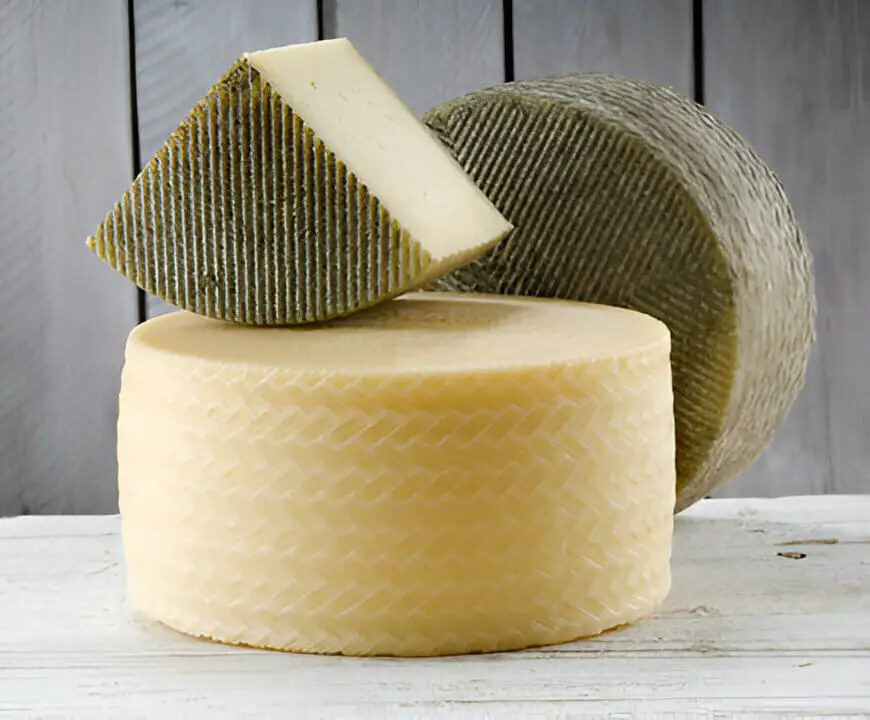
No conversation about iconic Spanish cheeses would be complete without giving Manchego its well-deserved moment in the spotlight. This renowned cheese has been a source of pride and tradition in the La Mancha region for centuries.
True Manchego must be made exclusively from the milk of the Manchega breed of sheep. These special sheep are renowned for producing milk that’s incredibly rich and flavorful, providing the perfect base for this unique cheese. By law, only cheese made in this way can bear the coveted Manchego name and designation.
The production process is steeped in age-old traditions that cheesemakers have passed down for generations. After the sheep’s milk is gently curdled using natural rennet, it goes through a meticulous pressing stage. But it’s not just any ordinary press – the freshly formed curds are pressed in distinctively woven esparto grass baskets. This imparts Manchego’s signature inimitable pattern on the rind.
As the cheese wheels age, they are frequently brushed with olive oil to help create that distinctive basketweave rind texture. Manchego can be aged anywhere from a few weeks to two years or more. The aging process is what unlocks Manchego’s incredible depth of flavors.
The color of the interior paste transitions from a pale yellow-white in young Manchegos to a deeper golden hue as it matures. But it’s the flavors that make Manchego truly swoon-worthy at any age. Young wheels have a buttery, grass-forward flavor profile with gentle tang. As it ages, those nutty, savory notes start to emerge until Manchego takes on its signature firm yet slightly crumbly texture and unmistakable sharp, peppery finish.
No matter what stage of aging you prefer, Manchego always has a remarkable essence of its terroir—those distinctive grassy and herbaceous notes are a direct link to the sheep’s diet of woody herbs and dry pastures in La Mancha. It’s this sense of place and tradition that makes Manchego so unique.
While you can absolutely enjoy Manchego on its own as part of a cheese plate, it also has a wonderful melting ability that makes it extremely versatile. Try grating some over roasted vegetables, using it for grilled cheese sandwiches, or incorporating shavings into a salad. There’s just something extra special about cooking and baking with an artisan cheese that has such deep roots in Spanish culture.
Iberico Vs. Manchego Cheese: What’s The Difference?
Milk Composition
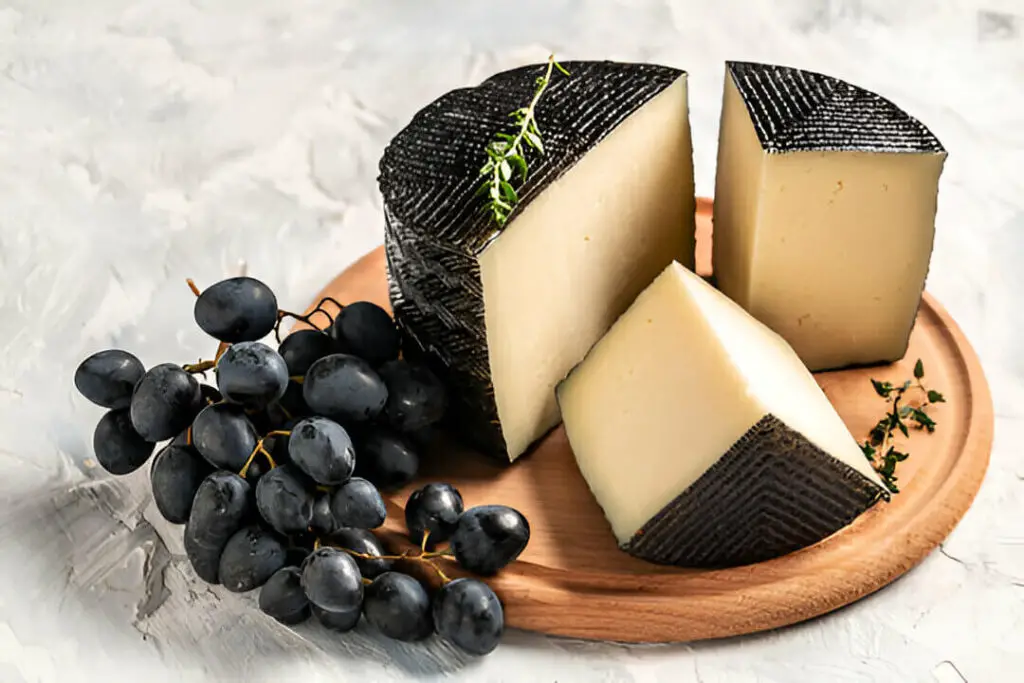
While both Manchego and Iberico may share that distinctively zigzag-patterned rind, it’s what’s on the inside that really sets them apart. Specifically, the milk composition used to make each of these beloved Spanish cheeses.
For Manchego, there’s no compromising on the milk source; it must be made exclusively from the milk of the Manchega breed of sheep. No other milk is allowed if it’s going to earn the Manchego name. These special sheep produce rich, creamy milk that becomes the entire foundation of Manchego’s signature flavors.
On the other hand, Iberico utilizes a more diverse blend of milk from multiple different animals. Traditionally, it contains milk from cows, sheep, and goats all combined together. This mixed milk approach gives Iberico a unique, complex flavor profile that differs quite distinctly from its all-sheep’s milk Manchego counterpart.
Whether the milks used for Iberico are pasteurized or unpasteurized can also impact the final flavor notes. Many Iberico makers choose to use unpasteurized mixed milks in order to create a cheese with particularly robust, rustic flavors.
So in essence, if you’re having Manchego, you’re experiencing the pure, unadulterated essence of sheep’s milk transformed into cheese form. With Iberico, you’re getting a harmonious melding of different milk varieties playing against one another.
Texture
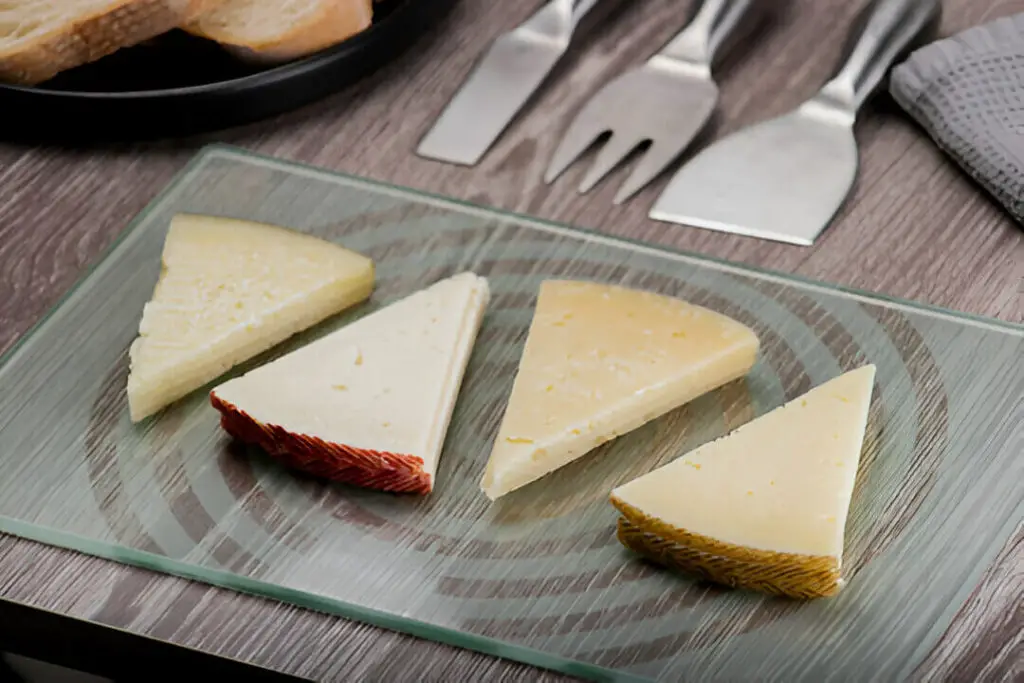
Beyond just their contrasting milk compositions, the textures of Manchego and Iberico cheese also have some key distinctions. A lot of this comes down to the aging processes they go through.
With Manchego, the texture transformation is quite dramatic as it ages. When young (just a few weeks old), Manchego has a relatively soft, almost spreadable texture with a creamy mouthfeel. As it continues aging over months to a year or two, it takes on an unmistakably firm, compact, and dense consistency.
Older Manchegos also develop a distinct crunchy, crystalline quality from the protein breakdown during extended aging. This gives the cheese an incredible crumbly texture that’s perfect for grating over dishes. You’ll often see these older wheels described as “curado” or cured on their labels.
Iberico, on the other hand, maintains a remarkably consistent texture throughout its aging process. No matter if it is semi-cured or aged for years, you can expect Iberico to have a distinctly firm, compact, slightly oily texture from start to finish.
Its dense paste doesn’t get overly dry or crumbly, even as it matures. This makes Iberico an excellent choice for shaving into thin slices to really allow those rich, savory flavors to linger on the palate.
Part of this textural difference comes from the varied milk compositions and unique aging environments. But production methods also play a role. Manchego is pressed into those woven esparto grass molds, which impacts how the curds knit together as they age. Iberico is gently pressed into cylindricalmolds,s resulting in a more uniform, velvety interior texture.
Flavor
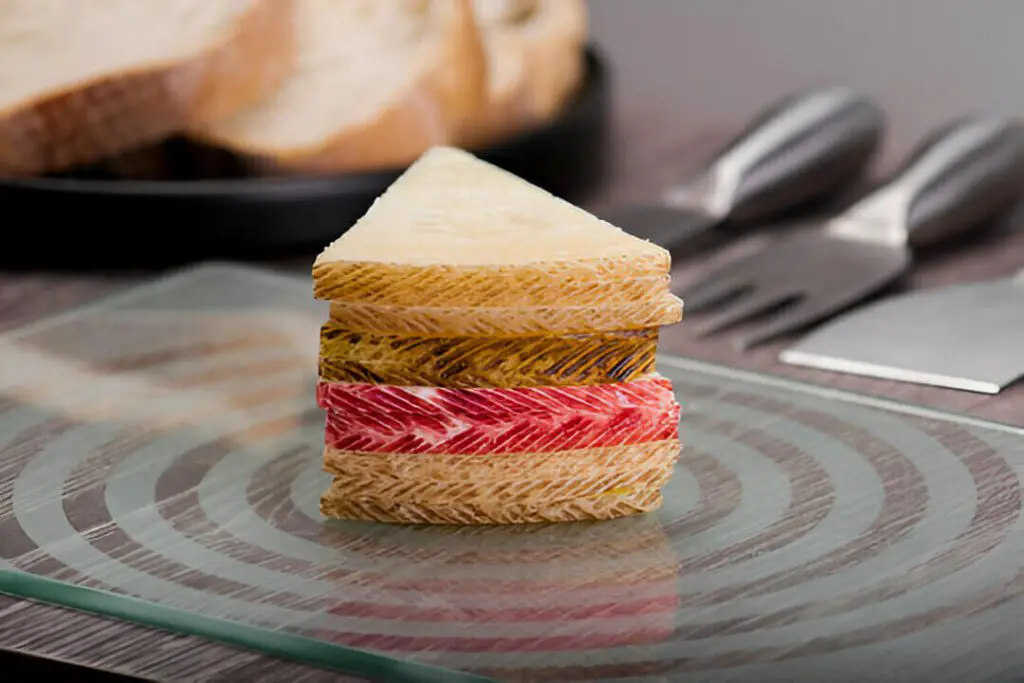
At the end of the day, it’s the flavors of these two Spanish cheese giants that really set them apart. While their visual similarities may cause occasional confusion, one bite instantly reveals their unique tasting profiles.
Let’s start with Manchego. As we discussed, since it’s made solely from sheep’s milk, it carries very distinct savory, nutty, and herbaceous notes directly linked to those Manchega sheep diets. Young Manchegos have a mild, buttery flavor with hints of grassy, tart notes.
But as Manchego ages, that’s when the real magic happens. Older Manchegos take on an unmistakable sharpness and tangy, peppery bite from the complex proteins and fatty acids breaking down over time. The longer it’s aged, the more pronounced and intense those rich, salty, piquant flavors become.
Iberico’s flavor profile is equally robust and complex, but in its own unique way. Since it’s made from that decadent blend of cow, sheep, and goat’s milk, the flavors are layered and nuanced right out of the gate.
You’ll immediately pick up on rich, buttery notes from the cow’s milk, along with hints of pleasantly tangy, yogurt-like flavors from the sheep and goat dairy. As Iberico continues to age, those initial bright, lively flavors deepen and meld into more caramelized, nutty, and slightly sweet dimensions.
Many describe Iberico as having distinct brown-buttery qualities along with fruity, slightly boozy top notes. It’s an incredibly decadent, lingering flavor that keeps you coming back for more.
So while that nutty, savory, grassy essence is what defines Manchego’s flavor DNA, Iberico is more about layering multiple milk sources together into one harmonious, creamy, and sumptuous taste experience.
FAQ’s
Are Manchego and Iberico protected by any certifications or designations?
Yes, both cheeses have protected status. Manchego has a Denominación de Origen Protegida (DOP) certification, meaning it can only be produced in certain regions of Spain following strict requirements for breeds of sheep, production methods, and aging. Iberico also has a protected quality indication (IQP) certification.
How long can Manchego and Iberico be aged for maximum flavor?
Manchego can be aged up to 2 years, with the longer-aged “Viejo” Manchegos developing the most intense, peppery, crystalline flavors. Iberico is also aged, with premium versions being aged 12–24 months to allow the buttery, nutty notes to fully develop.
Are there any variations of Manchego or Iberico made with different milks?
For Manchego, absolutely not—it must be 100% Manchego sheep’s milk by law. However, some cheesemakers do produce “Iberico-style” cheeses using just cow’s milk or other single milk sources rather than the traditional blend.
Which cheese is better for melting and cooking?
Both cheeses are fantastic for cooking and melting. Younger Manchegos are incredible for melting, while older ones can be grated. Iberico’s firm texture makes it great for shaving over dishes.
How should I store Manchego and Iberico at home?
Wrap them in porous materials like cheese paper or cloth and store them in the vegetable crisper of your fridge. Let them come to room temperature before serving for the best flavors.
